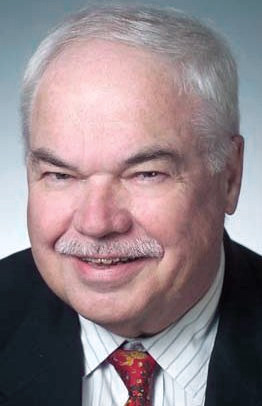

 For those participants that have been working rearranged hours and participating remotely in connection with ICANN's Nairobi meeting, here is a chance to sleep in. While ICANN Board tea leaf reading is not an exact science, there is a great deal of predictability to ICANN's actions so here are my big three predictions for tomorrow.
For those participants that have been working rearranged hours and participating remotely in connection with ICANN's Nairobi meeting, here is a chance to sleep in. While ICANN Board tea leaf reading is not an exact science, there is a great deal of predictability to ICANN's actions so here are my big three predictions for tomorrow.
 The Ninth Circuit affirmed the district court's ruling in Office Depot v. Zuccarini, agreeing that a creditor may levy against a domain name in the jurisdiction where the domain name registry is located. The decision is significant for two reasons. First, it affirms (or reaffirms) that domain names are property subject to the claims of creditors...
The Ninth Circuit affirmed the district court's ruling in Office Depot v. Zuccarini, agreeing that a creditor may levy against a domain name in the jurisdiction where the domain name registry is located. The decision is significant for two reasons. First, it affirms (or reaffirms) that domain names are property subject to the claims of creditors...
 They say late converts are the most passionate believers. Until now I haven't supported the Expression of Interest (EOI) for new TLDs, the proposed mechanism to measure the number and type of likely applications. Not because it won't work (I think it'll work fine) but because I didn't think it was necessary. I've changed my mind. Here's why.
They say late converts are the most passionate believers. Until now I haven't supported the Expression of Interest (EOI) for new TLDs, the proposed mechanism to measure the number and type of likely applications. Not because it won't work (I think it'll work fine) but because I didn't think it was necessary. I've changed my mind. Here's why.
 Like many of those present at the ICANN Seoul meeting last October, and indeed along with those around the globe who were eagerly awaiting new TLDs, I too was angered and frustrated at ICANN's deadlines that were slipping like a cartoon character running on an oil slick, caused by an incessant search by certain industry factions for perfection in an imperfect science. (We do work with the internet remember?).
Like many of those present at the ICANN Seoul meeting last October, and indeed along with those around the globe who were eagerly awaiting new TLDs, I too was angered and frustrated at ICANN's deadlines that were slipping like a cartoon character running on an oil slick, caused by an incessant search by certain industry factions for perfection in an imperfect science. (We do work with the internet remember?).
 Do you keep hearing about this Registry/Registrar Separation (or Vertical Integration) issue but really aren't sure what it's all about? This post should help you to get a better understanding of the details of this saga which is one of the most controversial, yet still unresolved issues within the new gTLD program.
Do you keep hearing about this Registry/Registrar Separation (or Vertical Integration) issue but really aren't sure what it's all about? This post should help you to get a better understanding of the details of this saga which is one of the most controversial, yet still unresolved issues within the new gTLD program.
 At the beginning of last year, MarkMonitor participated in VeriSign's beta program to test server-level protections which were designed to mitigate the potential for unintended domain name changes, deletions and transfers. When VeriSign finally released their Registry Locking Program to all registrars, I expected to see the owners of highly trafficked sites flocking to this new offering. However, after a review of the top 300 most highly trafficked sites, I was shocked to uncover that less than 10% of these valuable domains were protected using these newly available security measures.
At the beginning of last year, MarkMonitor participated in VeriSign's beta program to test server-level protections which were designed to mitigate the potential for unintended domain name changes, deletions and transfers. When VeriSign finally released their Registry Locking Program to all registrars, I expected to see the owners of highly trafficked sites flocking to this new offering. However, after a review of the top 300 most highly trafficked sites, I was shocked to uncover that less than 10% of these valuable domains were protected using these newly available security measures.
 In 1998, the United States government might have taken a different path in asserting its control over the technical administration of the DNS. It might have asserted full U.S. governmental control, or it might have turned over the functions to an international body such as the International Telecommunications Union. Instead, it created a "private-public partnership", incorporated as a California "nonprofit public benefit corporation", with a charter giving the company a dual mission of quasi-governmental functions combined with responsibility for operational stability of the Internet.
In 1998, the United States government might have taken a different path in asserting its control over the technical administration of the DNS. It might have asserted full U.S. governmental control, or it might have turned over the functions to an international body such as the International Telecommunications Union. Instead, it created a "private-public partnership", incorporated as a California "nonprofit public benefit corporation", with a charter giving the company a dual mission of quasi-governmental functions combined with responsibility for operational stability of the Internet.
 SWITCH, the registry for .CH and .LI domain names, enabled DNSSEC on day two of the annual Domain Pulse conference in Luzern yesterday. SWITCH became the third ccTLD registry to enable DNSSEC giving registrants of .CH domain names added security following .SE (Sweden) and .CZ (Czech Republic).
SWITCH, the registry for .CH and .LI domain names, enabled DNSSEC on day two of the annual Domain Pulse conference in Luzern yesterday. SWITCH became the third ccTLD registry to enable DNSSEC giving registrants of .CH domain names added security following .SE (Sweden) and .CZ (Czech Republic).
 The 2010 Domain Pulse, hosted by SWITCH (the .CH registry) was held in the snowy Swiss city of Luzern. Domain Name Security (DNS) was of particular importance in this year's meeting with DNSSEC being implemented in the root zone in 2010 by ICANN, and by many registries in the next few years. ICANN plan to have all root servers signed with DNSSEC by mid-2010 Kim Davies, Manager, Root Zone Services at ICANN told the meeting, starting with the L root server, then A root server with the last being the J root server as all are gradually signed.
The 2010 Domain Pulse, hosted by SWITCH (the .CH registry) was held in the snowy Swiss city of Luzern. Domain Name Security (DNS) was of particular importance in this year's meeting with DNSSEC being implemented in the root zone in 2010 by ICANN, and by many registries in the next few years. ICANN plan to have all root servers signed with DNSSEC by mid-2010 Kim Davies, Manager, Root Zone Services at ICANN told the meeting, starting with the L root server, then A root server with the last being the J root server as all are gradually signed.
 Again on the subject of new Top-Level Domains (TLDs) ... One of the "issues" that concerned a number of people is the concept of "vertical separation". The basic idea is that domain name registries and registrars should be kept separate. While that is a wonderful Utopian ideal, the reality is that in the real world companies own other companies, people trade in stocks and shares etc., etc. So it's far from being a simple "cut and dried" situation.
Again on the subject of new Top-Level Domains (TLDs) ... One of the "issues" that concerned a number of people is the concept of "vertical separation". The basic idea is that domain name registries and registrars should be kept separate. While that is a wonderful Utopian ideal, the reality is that in the real world companies own other companies, people trade in stocks and shares etc., etc. So it's far from being a simple "cut and dried" situation.